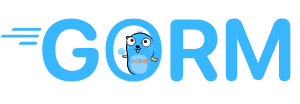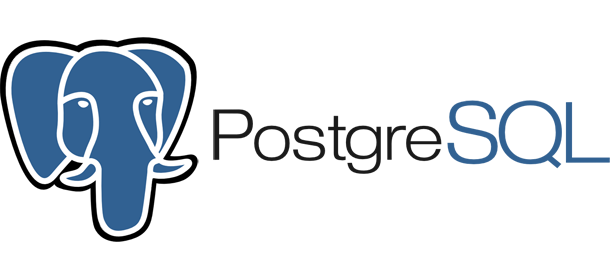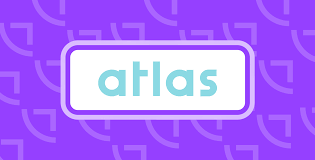GORM, PostgreSQL & Atlas
TL;DR
In this post, we discuss our approach to managing a PostgreSQL database with GORM and Atlas in a collaborative development environment. We chose this tech stack for its advanced features, robust schema management, and seamless integration. GORM simplifies interactions with PostgreSQL and automates migrations, while Atlas handles schema versioning and ensures consistency across environments. For a practical example, check out this basic example repository.
Introduction
In our recent project, we faced the challenge of implementing a robust and efficient database solution in Go to manage PostgreSQL. This required us to find a tool that not only integrated seamlessly with PostgreSQL but also took advantage of Go's performance and concurrency features.
One of the critical aspects of this implementation was developing a migration strategy that could support multiple developers working simultaneously on migrations and schema changes.
This approach not only needed to ensure the integrity and consistency of our database but also had to facilitate smooth collaboration across our development team.
In this post, we'll delve into the strategies and practices we adopted to manage these challenges, ensuring a seamless and efficient workflow. Whether you're part of a small team or a larger organization, these insights might help you streamline your database development process.
Identifying the Challenges & Requirements
PostgreSQL is known for its strict adherence to SQL standards, which can make schema migrations more precise but also more demanding. The main concern regarding our problem is the following:
Transactional DDL: PostgreSQL supports transactional DDL, allowing schema changes to be rolled back if something goes wrong. This requires careful planning to ensure migrations do not violate transactional integrity.
Strict Type Checking: The database’s strict type enforcement means that schema changes must be meticulously planned to avoid type mismatches or data integrity issues.
Consistency Across Environments: Ensuring that development, staging, and production environments remain consistent is crucial. PostgreSQL’s feature set often requires sophisticated tooling to manage environment-specific configurations.
Concurrent Schema Changes: With multiple developers working on the same schema, ensuring that changes do not conflict or cause unexpected behavior is a significant challenge, especially when using advanced PostgreSQL features.
Dependency Management: PostgreSQL's dependencies, such as foreign keys, triggers, and constraints, require careful management during schema changes to prevent breaking dependencies.
The key to overcoming these challenges is to use an ORM alongside a robust migration strategy and a well-defined development cycle.
The Stack
This stack leverages the strengths of each component to create a robust and efficient database solution that supports collaborative development and complex application requirements.

GORM is a, quite conveniently named, ORM for GO
GORM simplifies schema management with support for automatic migrations, reducing the complexity of database versioning.
It offers a wide range of features, including association handling, preloading, and eager loading, enhancing developer productivity.

PostgreSQL offers a rich set of features such as support for complex data types, full-text search, and JSONB, making it suitable for sophisticated applications.
Known for its robustness and high performance, PostgreSQL is ideal for handling large datasets and complex queries.
As a widely-used open-source database, PostgreSQL benefits from strong community support and a wealth of extensions.

Atlas is a modern database schema management tool that provides a declarative way to manage database schemas and migrations.
"Terraform, but for database migrations"
Atlas supports a collaborative workflow, making it easy for multiple developers to work on database changes simultaneously without conflicts.
It integrates well with Go projects, allowing seamless schema management alongside your Go-based application.
Bringing them all together ?
Unified Data Layer: GORM acts as a bridge between your Go application and PostgreSQL, translating Go data structures into database tables and queries. This integration allows developers to work with data in a familiar, object-oriented way while leveraging PostgreSQL's powerful features.
Schema Management with Atlas: Atlas complements GORM by providing a declarative approach to schema management. It ensures that database schemas are consistently maintained across different environments, minimizing discrepancies and manual errors.
Concurrent Migrations: Atlas allows multiple developers to work on schema changes simultaneously by providing a version-controlled migration workflow. This ensures that changes are tracked and integrated smoothly, reducing the risk of conflicts.
Automated Migrations with GORM: GORM's automatic migration feature works in tandem with Atlas to streamline the application of schema changes. This automation reduces the overhead of manually writing and applying migrations, making the development process more efficient.
Leveraging PostgreSQL's Strengths: GORM and Atlas enable the application to fully utilize PostgreSQL's advanced capabilities, such as complex queries and indexing. This ensures that the application remains performant and reliable, even as it scales.
Consistent Environments: By using Atlas for schema management, the development, staging, and production environments remain consistent. This consistency helps prevent unexpected issues when deploying changes across environments.
Ease of Use: The combination of GORM, PostgreSQL, and Atlas simplifies database operations, allowing developers to focus more on building features rather than managing database complexities.
Flexibility and Extensibility: With this stack, developers can easily extend and adapt their database schema as the application evolves, supporting both current needs and future growth.
Conclusion
Navigating the complexities of database management in a collaborative environment can be daunting, but with the right tools and strategies, it becomes a manageable and even rewarding challenge. By leveraging GORM, PostgreSQL, and Atlas, we've built a robust and efficient solution that not only enhances our development workflow but also ensures consistency and performance across our application.
For those interested in seeing our setup in action, I’ve made an example repository available here. Feel free to explore it for a practical demonstration of how GORM, PostgreSQL, and Atlas can work together effectively.
If you've made it this far, thank you for taking the time to read this post ? If you have any questions or want to share your own experiences, feel free to reach out or leave a comment below!
The above is the detailed content of GORM, PostgreSQL & Atlas. For more information, please follow other related articles on the PHP Chinese website!

Hot AI Tools

Undresser.AI Undress
AI-powered app for creating realistic nude photos

AI Clothes Remover
Online AI tool for removing clothes from photos.

Undress AI Tool
Undress images for free

Clothoff.io
AI clothes remover

Video Face Swap
Swap faces in any video effortlessly with our completely free AI face swap tool!

Hot Article

Hot Tools

Notepad++7.3.1
Easy-to-use and free code editor

SublimeText3 Chinese version
Chinese version, very easy to use

Zend Studio 13.0.1
Powerful PHP integrated development environment

Dreamweaver CS6
Visual web development tools

SublimeText3 Mac version
God-level code editing software (SublimeText3)

Hot Topics
 1664
1664
 14
14
 1423
1423
 52
52
 1317
1317
 25
25
 1268
1268
 29
29
 1242
1242
 24
24
 Golang's Purpose: Building Efficient and Scalable Systems
Apr 09, 2025 pm 05:17 PM
Golang's Purpose: Building Efficient and Scalable Systems
Apr 09, 2025 pm 05:17 PM
Go language performs well in building efficient and scalable systems. Its advantages include: 1. High performance: compiled into machine code, fast running speed; 2. Concurrent programming: simplify multitasking through goroutines and channels; 3. Simplicity: concise syntax, reducing learning and maintenance costs; 4. Cross-platform: supports cross-platform compilation, easy deployment.
 Golang vs. Python: Performance and Scalability
Apr 19, 2025 am 12:18 AM
Golang vs. Python: Performance and Scalability
Apr 19, 2025 am 12:18 AM
Golang is better than Python in terms of performance and scalability. 1) Golang's compilation-type characteristics and efficient concurrency model make it perform well in high concurrency scenarios. 2) Python, as an interpreted language, executes slowly, but can optimize performance through tools such as Cython.
 Golang and C : Concurrency vs. Raw Speed
Apr 21, 2025 am 12:16 AM
Golang and C : Concurrency vs. Raw Speed
Apr 21, 2025 am 12:16 AM
Golang is better than C in concurrency, while C is better than Golang in raw speed. 1) Golang achieves efficient concurrency through goroutine and channel, which is suitable for handling a large number of concurrent tasks. 2)C Through compiler optimization and standard library, it provides high performance close to hardware, suitable for applications that require extreme optimization.
 Golang's Impact: Speed, Efficiency, and Simplicity
Apr 14, 2025 am 12:11 AM
Golang's Impact: Speed, Efficiency, and Simplicity
Apr 14, 2025 am 12:11 AM
Goimpactsdevelopmentpositivelythroughspeed,efficiency,andsimplicity.1)Speed:Gocompilesquicklyandrunsefficiently,idealforlargeprojects.2)Efficiency:Itscomprehensivestandardlibraryreducesexternaldependencies,enhancingdevelopmentefficiency.3)Simplicity:
 Golang vs. Python: Key Differences and Similarities
Apr 17, 2025 am 12:15 AM
Golang vs. Python: Key Differences and Similarities
Apr 17, 2025 am 12:15 AM
Golang and Python each have their own advantages: Golang is suitable for high performance and concurrent programming, while Python is suitable for data science and web development. Golang is known for its concurrency model and efficient performance, while Python is known for its concise syntax and rich library ecosystem.
 Golang vs. C : Performance and Speed Comparison
Apr 21, 2025 am 12:13 AM
Golang vs. C : Performance and Speed Comparison
Apr 21, 2025 am 12:13 AM
Golang is suitable for rapid development and concurrent scenarios, and C is suitable for scenarios where extreme performance and low-level control are required. 1) Golang improves performance through garbage collection and concurrency mechanisms, and is suitable for high-concurrency Web service development. 2) C achieves the ultimate performance through manual memory management and compiler optimization, and is suitable for embedded system development.
 Golang and C : The Trade-offs in Performance
Apr 17, 2025 am 12:18 AM
Golang and C : The Trade-offs in Performance
Apr 17, 2025 am 12:18 AM
The performance differences between Golang and C are mainly reflected in memory management, compilation optimization and runtime efficiency. 1) Golang's garbage collection mechanism is convenient but may affect performance, 2) C's manual memory management and compiler optimization are more efficient in recursive computing.
 The Performance Race: Golang vs. C
Apr 16, 2025 am 12:07 AM
The Performance Race: Golang vs. C
Apr 16, 2025 am 12:07 AM
Golang and C each have their own advantages in performance competitions: 1) Golang is suitable for high concurrency and rapid development, and 2) C provides higher performance and fine-grained control. The selection should be based on project requirements and team technology stack.




